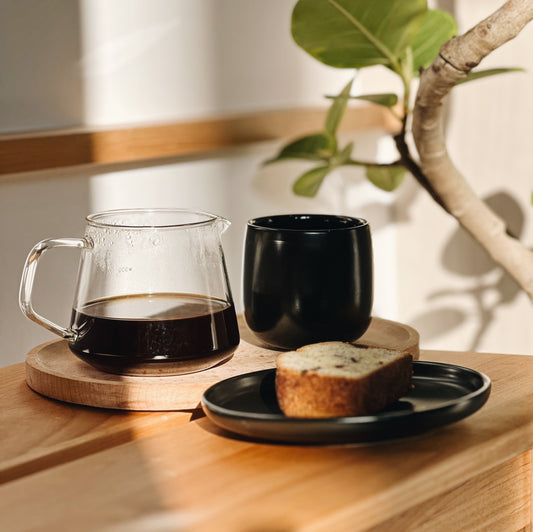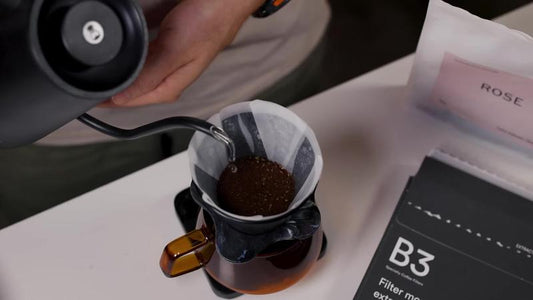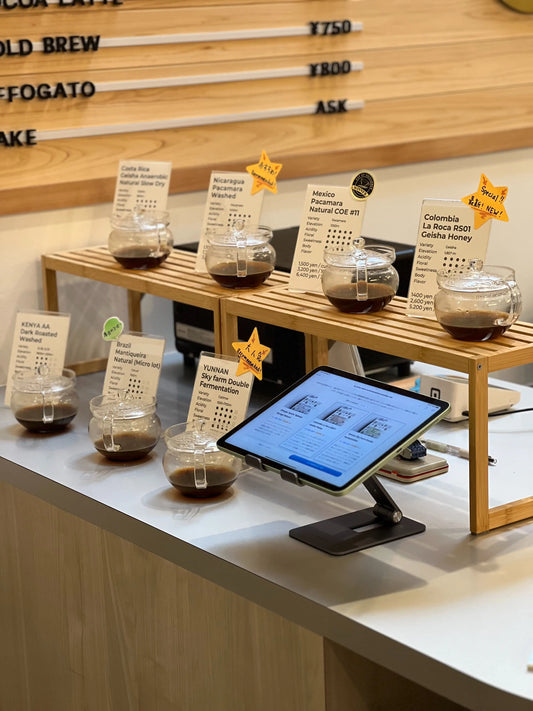Understanding Contact Points in Pour-Over Brewing: Insights from Matt Winton
Pour-over coffee brewing offers a unique and rewarding experience, yet it often presents challenges that can lead to inconsistencies. In this blog post, we explore a compelling conversation with Matt Winton, the 2021 World Brewers Cup champion, who provides invaluable insights into a critical aspect of pour-over brewing: contact points. Matt's expertise helps us understand how water interacts with coffee grounds and how we can control this interaction to achieve a more consistent and flavorful cup of coffee.

Matt Winton, 2021 World Brewers Cup Champion, discussing pour-over brewing.
The Challenges of Pour-Over Brewing
Many home brewers struggle to achieve a consistent and flavorful cup of coffee using the pour-over method. Even Matt Winton, who won the World Brewers Cup, faced this challenge. Despite his expertise, he found that following online advice and using popular drippers didn't always yield the desired results. He experienced bitterness and astringency in his brews, prompting him to question commonly held beliefs about high extraction, high ratios, and high water temperatures. Matt realized that achieving a good brew required more than just following trends blindly.
Matt's experience underscores a common issue in the coffee world: the abundance of online information, some of which may not be entirely accurate or universally applicable. It's easy to get overwhelmed by conflicting advice, especially when you're still learning the fundamentals of brewing. Matt's journey, driven by his dissatisfaction with certain brewing methods, ultimately led him to a deeper understanding of how pour-over brewers function.

An example of a pour-over brewing process.
The Role of Contact Points
Matt Winton's research and experimentation revealed that "contact points" are a critical factor in understanding how water flows through a paper filter. Contact points refer to the areas where the filter touches the walls of the brewer or any other surface within the brewing apparatus. Matt found that these contact points significantly influence water flow, more so than issues like sagging or holes in the filter.
The theory suggests that water flows more readily through areas where the filter is not in contact with a surface, creating pathways for the water to pass through. Conversely, areas where the filter is tightly pressed against a surface restrict water flow. This concept of contact points is essential for understanding how different brewers, with their unique shapes and designs, affect the brewing process.

Matt Winton and another individual discussing the concept of contact points.
The Impact of Contact Points on Flow Rate
To demonstrate the impact of contact points on flow rate, Matt conducted a series of experiments. He first showed how water flows through a filter without any contact points and then compared it to the flow when the filter is placed in a Kono dripper, which has ridges at the bottom creating contact points. The results were striking: the presence of contact points significantly increased the flow rate, resulting in a faster drawdown time.
Matt further emphasized this concept by illustrating how even a single contact point, such as a spoon touching the side of the filter, can alter the water flow. He explained that if a paper filter is not touching anything, the flow will be slower. Conversely, if the filter is fully touching the walls of a brewer, the flow will be restricted. The water will primarily flow through the areas where the filter is not in contact, underscoring the critical role of contact points in determining the flow path.
The Booster: A Solution for Consistent Extraction
Understanding the importance of contact points, Matt Winton partnered with Sybarist to create the "Booster." This innovative device introduces numerous contact points at the base of the brewer, facilitating a more uniform distribution of water flow. The Booster's small holes are slightly larger than the fibers of the paper filter, ensuring that water passes through the coffee grounds evenly.
By incorporating the Booster, brewers can achieve a more consistent extraction across the entire coffee bed, minimizing the risk of channeling or uneven extraction. This results in a more balanced and flavorful cup of coffee. Matt highlights that the Booster is just one example of how understanding contact points can enhance your brewing process. Other materials, such as a mesh, can also be used to create similar effects and achieve more consistent extraction.

The Booster, a device designed to create consistent extraction.
Brewing Styles and Preferences
Matt and his colleague discuss how their personal brewing preferences differ, despite their shared understanding of contact points. Matt favors flatbed brewers equipped with a booster for a fuller-bodied cup, whereas his colleague prefers conical brewers with more bypass for a lighter, cleaner taste. This variation underscores that the knowledge of contact points can be applied across various brewing styles and personal preferences.
Matt elaborates that he employs different brewing techniques based on the type of coffee he is using. For washed coffees, he aims for higher extraction by using a fine grind, high temperature, and a longer brew time. In contrast, for natural or honey processed coffees, he opts for lower extraction to preserve their delicate flavors and sweetness. This adaptability showcases how understanding contact points can be used to customize the brewing process to achieve the desired flavor profile.

A side-by-side comparison of brews with and without the booster.
Conclusion
Matt Winton's insights into the role of contact points in pour-over brewing offer a valuable framework for understanding how water flows through coffee grounds. By grasping how contact points influence flow rate and extraction, you can adjust your brewing process to achieve a more consistent and flavorful cup. Whether you prefer a lighter, cleaner cup or a fuller-bodied brew, the principles of contact points can be applied across various brewing styles and preferences.
Experiment with different brewers, filters, and techniques to optimize your brewing process. Embrace the journey of coffee brewing as a continuous learning experience. Understanding fundamental concepts, such as contact points, can help you appreciate the art and science of coffee on a deeper level.

A grinder, which plays a crucial role in achieving the desired extraction.





